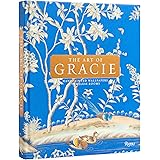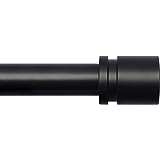Creative Modern Garden Design Ideas: Transform Your Outdoor Space
Imagine stepping out into your garden, not just into a patch of green, but into an extension of your home – a tranquil retreat, an vibrant entertaining area, or a minimalist sanctuary. This dream is entirely achievable with thoughtful design. The video above showcases 100 inspiring examples, but transforming those visuals into your own reality requires understanding the core principles and practical steps behind modern garden design. It’s about more than just plants; it’s about crafting an immersive outdoor experience that reflects your personal style and enhances your lifestyle.
Modern garden design is distinct for its emphasis on clean lines, functionality, and a seamless integration with contemporary architecture. It moves beyond traditional sprawling flowerbeds, favoring structured layouts, sophisticated material palettes, and a deliberate connection to nature. This approach can feel both refreshing and a little daunting, especially when faced with a blank canvas or an outdated yard. However, by breaking down the key elements, you can confidently embark on creating your own stunning modern outdoor oasis.
Embracing the Essence of Modern Garden Design
At its heart, modern garden design champions simplicity, structure, and purpose. It’s a departure from ornate, fussy landscapes, preferring an uncluttered aesthetic that highlights form and texture. Think about how modern interior design focuses on open spaces and functional furniture; the same principles apply here. The goal is to create a visually appealing, low-maintenance outdoor environment that provides both relaxation and utility. This style often uses a limited plant palette, allowing each specimen to make a bold statement rather than blending into a chaotic mix.
The philosophy of a modern garden often revolves around creating distinct zones within the outdoor space. Perhaps a dining area, a quiet seating nook, or even a dedicated play zone for children. Each area is typically defined by clever use of hardscaping, planting, or screening elements. This intelligent planning ensures every square foot of your property serves a specific function, contributing to a cohesive and highly usable outdoor environment. Your personal needs and preferences will ultimately dictate these zones, making your modern garden uniquely yours.
The Art of Hardscaping: Foundations of Modern Gardens
Hardscaping is the backbone of any modern garden design, providing structure, pathways, and defined areas. Materials like concrete, natural stone, steel, and treated timber are frequently employed for their durability and sleek appearance. Imagine a spacious concrete patio with clean, geometric lines, or perhaps a series of floating timber decks leading to a quiet garden corner. These elements not only define spaces but also introduce crucial textural contrasts that are a hallmark of contemporary aesthetics.
The choice of hardscaping materials profoundly influences the overall feel of your outdoor space. Large format pavers in neutral tones can create an expansive, minimalist look, while corten steel planters introduce a warm, industrial edge that weathers beautifully over time. Gravel pathways can add a subtle crunch underfoot and provide excellent drainage, complementing drought-tolerant planting schemes. When designing your modern garden, consider how these materials will interact with each other and with the surrounding architecture, ensuring a harmonious and unified visual flow.
Sophisticated Softscaping: Plant Choices for Contemporary Appeal
While hardscaping provides the bones, softscaping brings life and vibrancy to your modern garden. The plant choices lean towards architectural forms, interesting textures, and often a limited color palette to maintain a sophisticated, uncluttered look. Instead of riotous blooms, think about structural grasses, succulents, statement trees, and shrubs with distinctive foliage. These plants are selected not just for their beauty but for their ability to contribute to the overall design scheme with their unique shapes and silhouettes.
Consider the dramatic appeal of a cluster of bamboo, or the striking upright form of a snake plant (Sansevieria) in a modern planter. Drought-tolerant species, such as agaves, aloes, and various ornamental grasses, are particularly popular for their low-maintenance qualities and sculptural appearance, aligning perfectly with sustainable modern garden design principles. Grouping plants with similar water and light requirements simplifies care, allowing you to enjoy your stunning outdoor space without excessive upkeep. Remember, fewer, well-chosen plants often have a greater impact than a multitude of different species.
Illuminating Your Oasis: Modern Garden Lighting
Lighting transforms a garden from a daytime spectacle into an enchanting evening retreat. Modern garden lighting is less about bright, general illumination and more about strategic placement to highlight features, create atmosphere, and enhance safety. Imagine subtle LED strip lights tucked beneath steps, or up-lights accentuating the form of a majestic tree or a sculptural water feature. The goal is to paint with light, creating depth and drama in the nocturnal landscape.
Contemporary lighting fixtures themselves are often design elements, with sleek, minimalist forms that blend seamlessly into the environment during the day. Consider path lighting that guides visitors, task lighting for outdoor cooking areas, and accent lighting to draw attention to your favorite plants or art pieces. Smart lighting systems, controllable via your phone, offer unparalleled flexibility, allowing you to adjust brightness and color temperature to suit any mood or occasion. Thoughtful illumination is key to making your modern garden enjoyable around the clock.
Water Features and Sculptural Elements: Adding Dynamic Flair
Water features introduce a sensory dimension to modern garden design, offering soothing sounds and reflective surfaces that catch the light. Unlike traditional, ornate fountains, modern water features often take on minimalist, geometric forms – a still reflecting pool, a simple blade of water flowing over a steel sheet, or a series of bubbling basalt columns. These elements serve as focal points, drawing the eye and adding a dynamic, calming presence to the space.
Similarly, sculptural elements, from abstract metal art to polished stone arrangements, serve as punctuation marks in the landscape. These pieces are chosen for their form, texture, and ability to complement the surrounding architecture and planting. Imagine a striking corten steel sculpture nestled amidst a bed of ornamental grasses, or a smooth, spherical stone in a minimalist gravel garden. These artistic additions elevate the entire modern garden design, turning it into an outdoor gallery that stimulates contemplation and appreciation.
Crafting Functional Outdoor Living Zones
A truly modern garden is an extension of your indoor living space, offering diverse zones for various activities. This means carefully planning for functionality alongside aesthetics. Consider a spacious patio for al fresco dining, complete with a built-in outdoor kitchen and comfortable seating. Perhaps a separate, secluded area for reading and quiet contemplation, furnished with minimalist loungers and surrounded by lush, architectural planting. The key is to create inviting spaces that encourage you to spend more time outdoors.
Privacy is also a crucial aspect of these living zones. Modern screening solutions, such as slatted timber fences, laser-cut metal panels, or dense planting screens, offer both aesthetic appeal and necessary seclusion. Imagine hosting a vibrant dinner party on your sleek patio, knowing that thoughtful design has provided both comfort and intimacy. This deliberate creation of functional zones significantly enhances the usability and enjoyment of your outdoor property, reinforcing the practical beauty of modern garden design.
Sustainable Practices in Modern Garden Design
Modern garden design increasingly incorporates sustainable practices, reflecting a growing environmental consciousness. This means choosing drought-tolerant plants, utilizing efficient irrigation systems like drip lines, and incorporating permeable surfaces to manage stormwater effectively. Rain gardens, which capture and filter runoff, are also gaining popularity, turning a practical necessity into an attractive landscape feature. The aim is to create a beautiful garden that thrives with minimal resource input.
Recycled and locally sourced materials are also preferred for hardscaping and construction, reducing the carbon footprint of your project. Think about reclaimed timber for decking or pathways, or crushed concrete for a stylish, eco-friendly base. Composting and mulching are simple, effective ways to enrich soil and reduce water evaporation, fostering a healthier garden ecosystem. Embracing sustainability not only benefits the planet but often leads to a more resilient and lower-maintenance modern garden.
Maximizing Small Spaces with Modern Ingenuity
Even the most compact outdoor areas can be transformed into stunning modern gardens with clever design. Vertical gardening, for instance, allows you to grow a surprising amount of greenery on walls or fences, adding lushness without taking up precious ground space. Living walls, herb gardens, or even decorative plant panels can create a powerful visual impact in a tight urban courtyard or balcony. Imagine a vibrant green wall backdrop to a small dining table, bringing nature into an otherwise concrete setting.
Multifunctional furniture and built-in seating are also excellent solutions for small spaces, providing utility without clutter. Consider a bench that doubles as storage, or a modular seating arrangement that can be reconfigured as needed. Strategic placement of mirrors can create the illusion of a larger area, reflecting light and views. The principles of clean lines, limited plant palettes, and defined zones are particularly effective in small modern garden design, making every inch count and ensuring a highly curated, impactful space.











